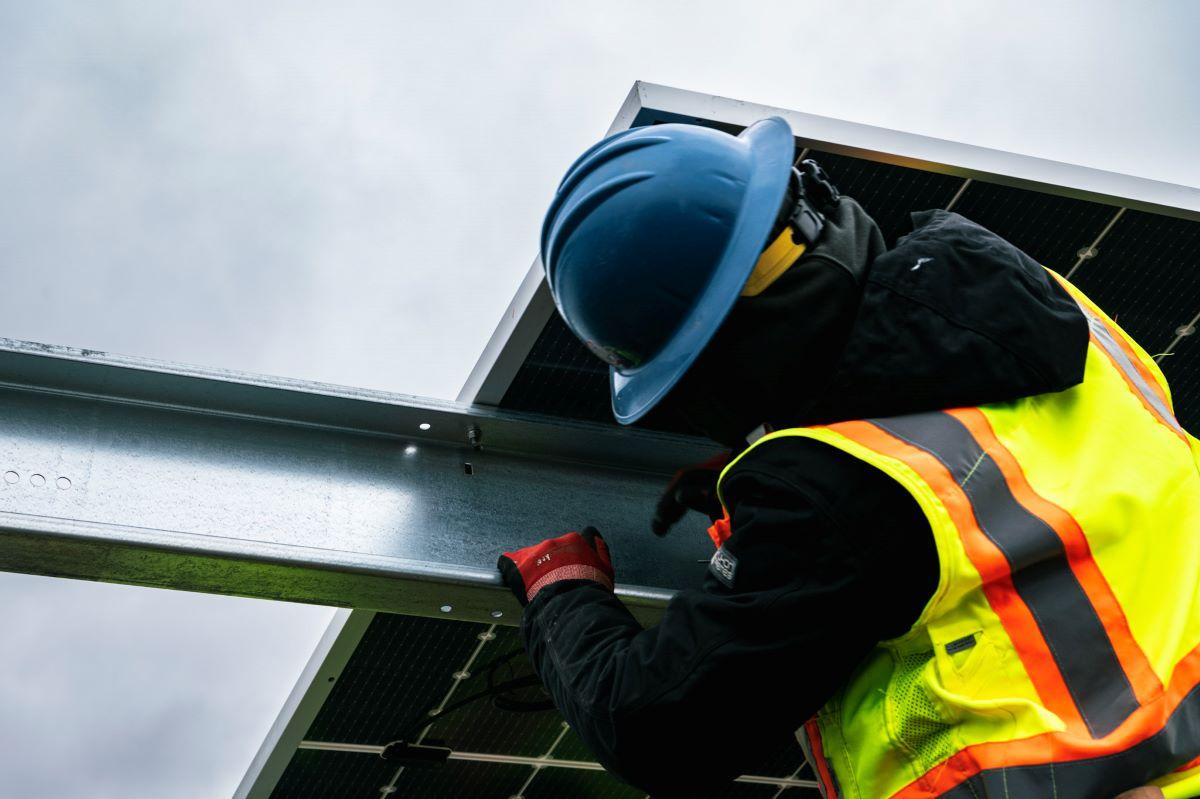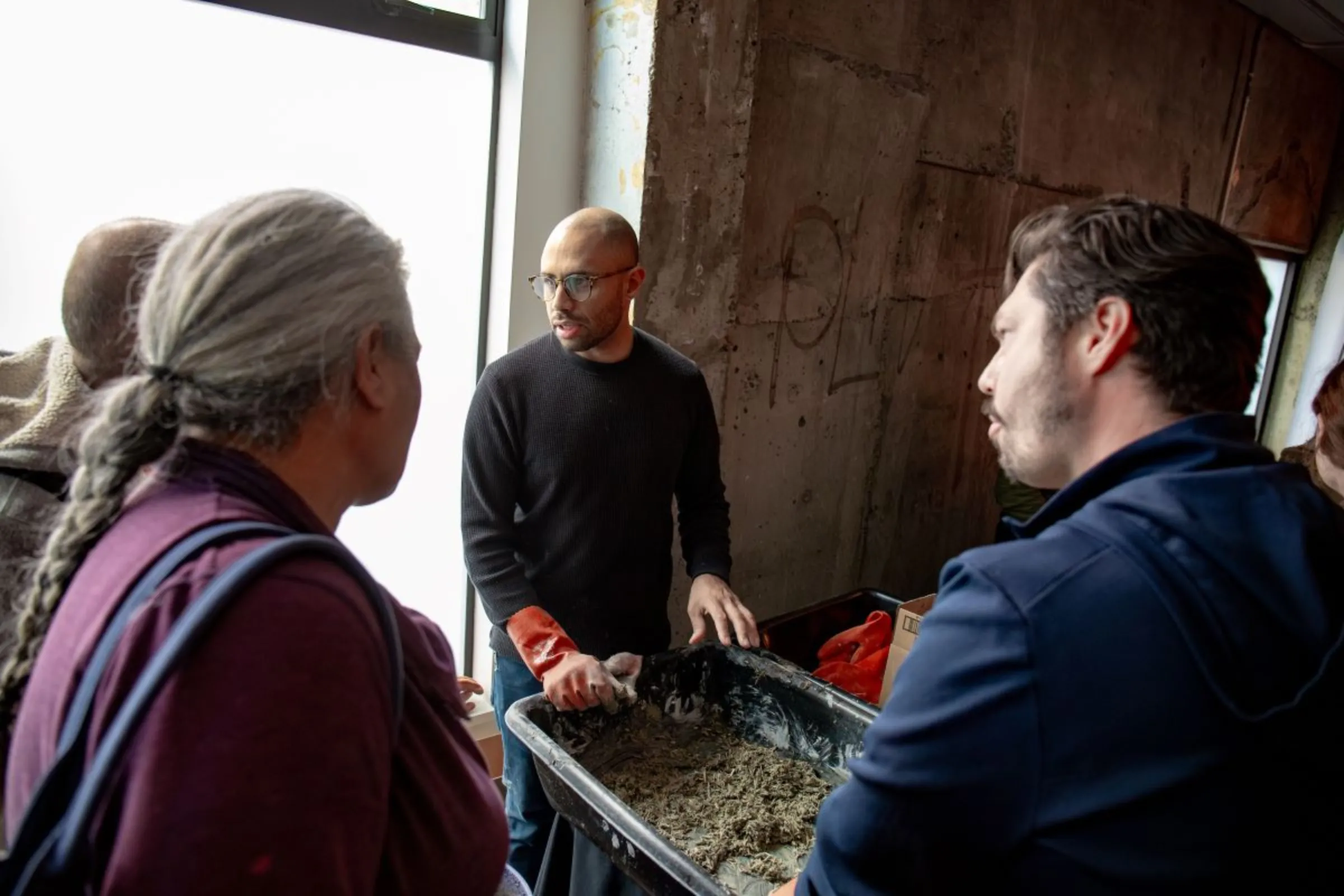Context is powered by the Thomson Reuters Foundation Newsroom.
Our Standards: Thomson Reuters Trust Principles

Historically opponents on many issues, environmental and labour groups are coming together across the country
WASHINGTON – Across the United States, cities are seeking to tap into billions of dollars in new federal funding and create a “green jobs” industry that backers say holds the promise of creating entirely new local economies.
The process is bringing together environmental and labour groups – long on opposing sides – and backers say it is now showing dividends that will extend far into the future.
“We have to decarbonise buildings, achieve 100% clean (electricity) supply – we have to meet those goals, but it’s just as critical how we get there,” said Priscilla De La Cruz, sustainability director for Providence, Rhode Island.
For Providence, that “how” was described in September, when it announced it would become the country’s first “climate jobs city”, agreeing to consult with workers on policymaking, ensure worker protections in green jobs, use apprentices and more.
“We’re preparing our workforce to succeed in this transition toward a sustainable green economy,” De La Cruz said, “ensuing that in this transition from a fossil fuel-based economy, that we’re not leaving anyone behind.”
Providence sits on the Atlantic Coast, and De La Cruz pointed to job opportunities in the burgeoning offshore wind industry, greening the city’s large port, responding to a new local building-decarbonisation ordinance and bolstering infrastructure in the face of more frequent flooding.
The work is part of a new focus by U.S. cities on fostering green jobs stemming from broader local climate plans passed in recent years, but also as part of a new collaboration between labour unions and environmental groups.
Nine “climate jobs” coalitions are operating across the country, with more in the works, according to the Climate Jobs National Resource Center, a labour-led organisation launched in 2020.
“We’re creating a new type of industrial policy focused on the dual transition from a carbon-based to a carbon-free economy, and from a workforce that is one demographic group to multiple,” said Patrick Crowley, secretary-treasurer of the Rhode Island AFL-CIO trade union.
The dual focus also addresses concerns that some green pledges are too light on implementation detail, said Michael Roles, executive director with Climate Jobs Rhode Island, which along with the state AFL-CIO helped facilitate the Providence announcement.
“We’re seeing a lot of increase in investments in renewable energy,” Roles said. “But no one is talking about how you’re training the workers and what you’re doing to make sure they’re protected.”
He said the work in Providence could serve as a national “beacon – this is what a just transition should look like.”
Across the country, hundreds of communities have passed or are developing climate action plans.
Those efforts are being boosted by a 2022 federal law that made hundreds of billions of dollars available for a spectrum of climate projects, with a particular focus on job creation.
Within its first year, the law prompted the creation of more than 170,600 new clean-energy jobs, according to Climate Power, and overall is likely to produce 9 million jobs in the next decade, according to University of Massachusetts researchers.
That is a huge opportunity for local communities, said Michael Carter, climate and workforce manager for the executive climate office of King County, which includes Seattle.
“I’ve been in workforce development for a long time, and I know things like this don’t come around all the time,” he said. “So we are greening the existing workforce, training them and placing them into positions.”
A first cohort of young adults from poor and marginalised communities has wrapped up training through a county programme, and this summer will work with electrical, HVAC, weatherisation and solar contractors, the start of a two-year programme, Carter said.
Cleveland, Ohio, also has a major new focus on green jobs, part of its effort to be carbon-neutral by 2050.
The city is now looking into how to ramp up worker training for clean energy, energy efficiency and weatherisation, electric vehicles, sustainable manufacturing and more, said Sarah O’Keeffe, the city’s director of sustainability and climate justice.
The new federal funding is “creating incredible job demand”, but leaves it up to local communities to ensure their workforces are ready, said Michelle Rose, executive director of the Cleveland-Cuyahoga County Workforce Development Board.
Last year Cleveland approved $10 million to boost the number of applicants who can take on green jobs, and also to expand their ranks to younger and minority workers.
“When this funding comes, the worse-case scenario is we get investment for exciting new projects and don’t have the workforce to make that work,” Rose said.

Participants at a green jobs summit in September 2023 in Seattle. King County/Handout via Thomson Reuters Foundation
Participants at a green jobs summit in September 2023 in Seattle. King County/Handout via Thomson Reuters Foundation
While many cities do appear to be connecting climate action with green jobs, long-term workforce development plans are far less common, researchers warn.
A study last year found that 47 of the 50 largest U.S. cities with climate action plans did mention green jobs or workers, said Joseph W. Kane, a fellow with the Brookings Institution think tank who led the research.
“But often they’re doing so in passing – paying lip service. ‘If we make these investments, they’ll lead to good jobs’ – and that’s kind of it,” he said.
For instance, less than a fifth of the cities spelled out how they would pay for ongoing new workforce development efforts, and then did not specify dates or other metrics by which to gauge success.
They also outlined a limited view of what constitutes these new jobs, Kane said.
“We find that most, if not all, are talking just in terms of energy – not around transportation or buildings, which are hugely important for climate mitigation.”
Training is of major importance for this type of work, said Mark Lundquist, an electrician in New York currently working on a solar project at LaGuardia Airport.
“Electrical work is very dangerous for people who don’t have the proper training, and rooftop solar installation is particularly dangerous,” said Lundquist, who also teaches at a training and apprenticeship centre run by the local branch of the International Brotherhood of Electrical Workers union.
The need for such work could soon be ramping up, with legislation introduced this year in New York City to install 100 megawatts of solar generation on its public buildings by 2025, and 150 megawatts by the end of the decade.
Lundquist said he and his colleagues were ready.
“I care about the climate and so does my union. I put solar on my own house and I am glad that my union is also involved in fighting for a sustainable planet.”
Context is powered by the Thomson Reuters Foundation Newsroom.
Our Standards: Thomson Reuters Trust Principles